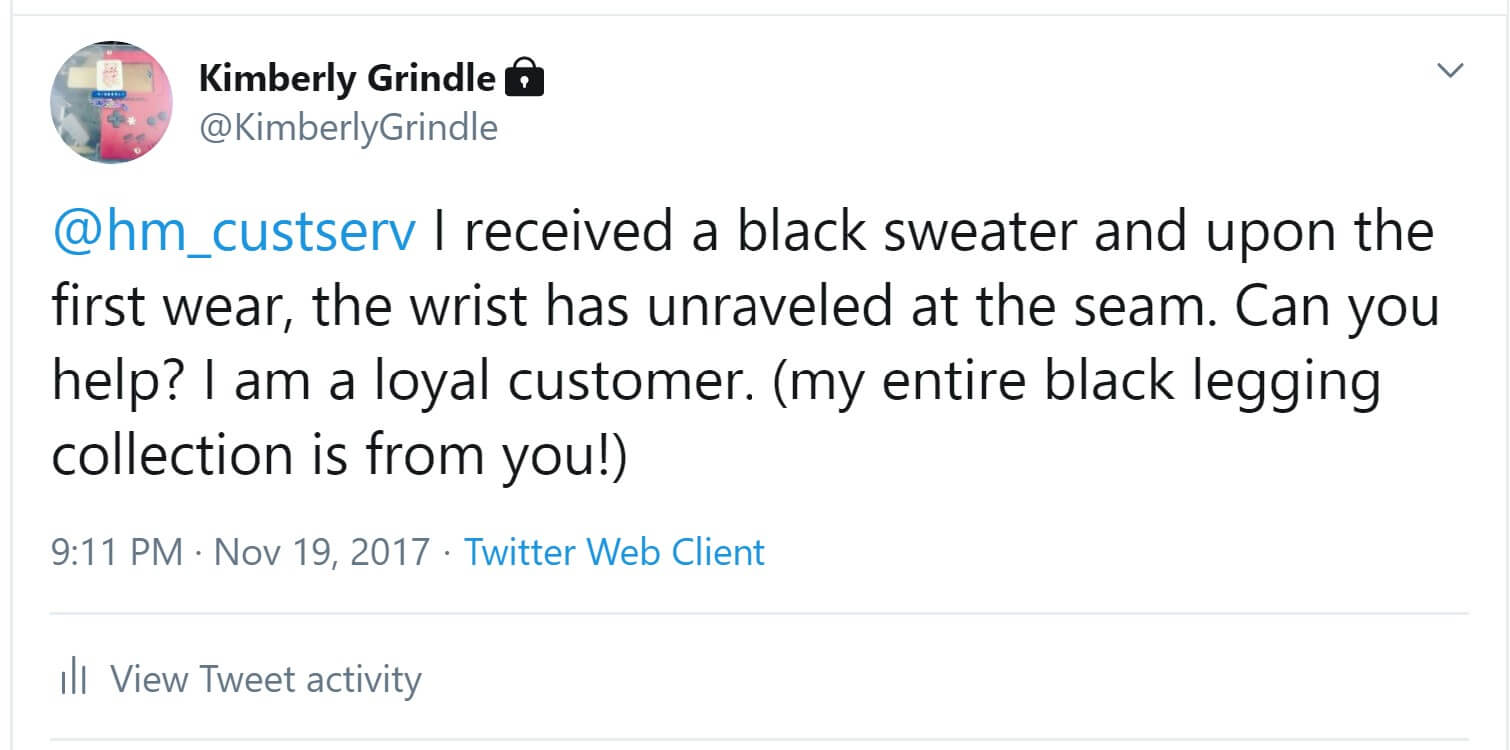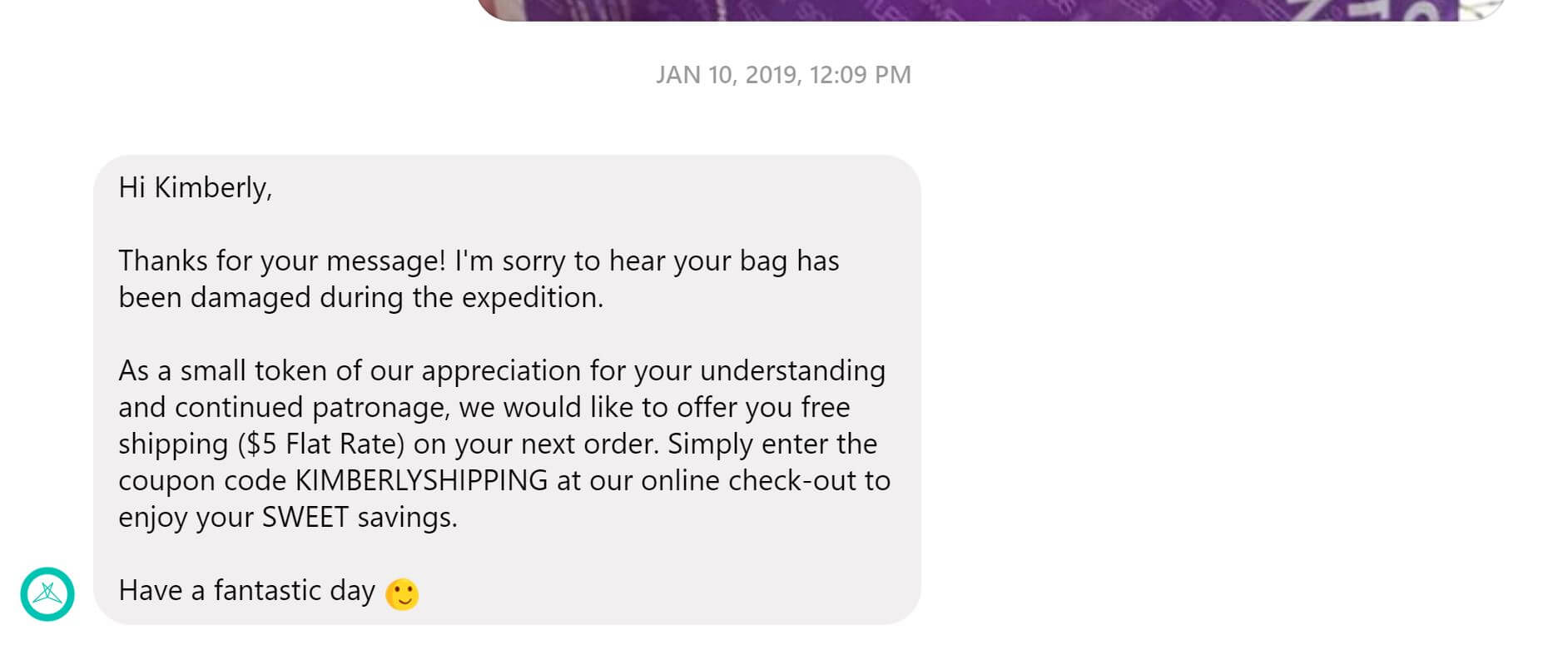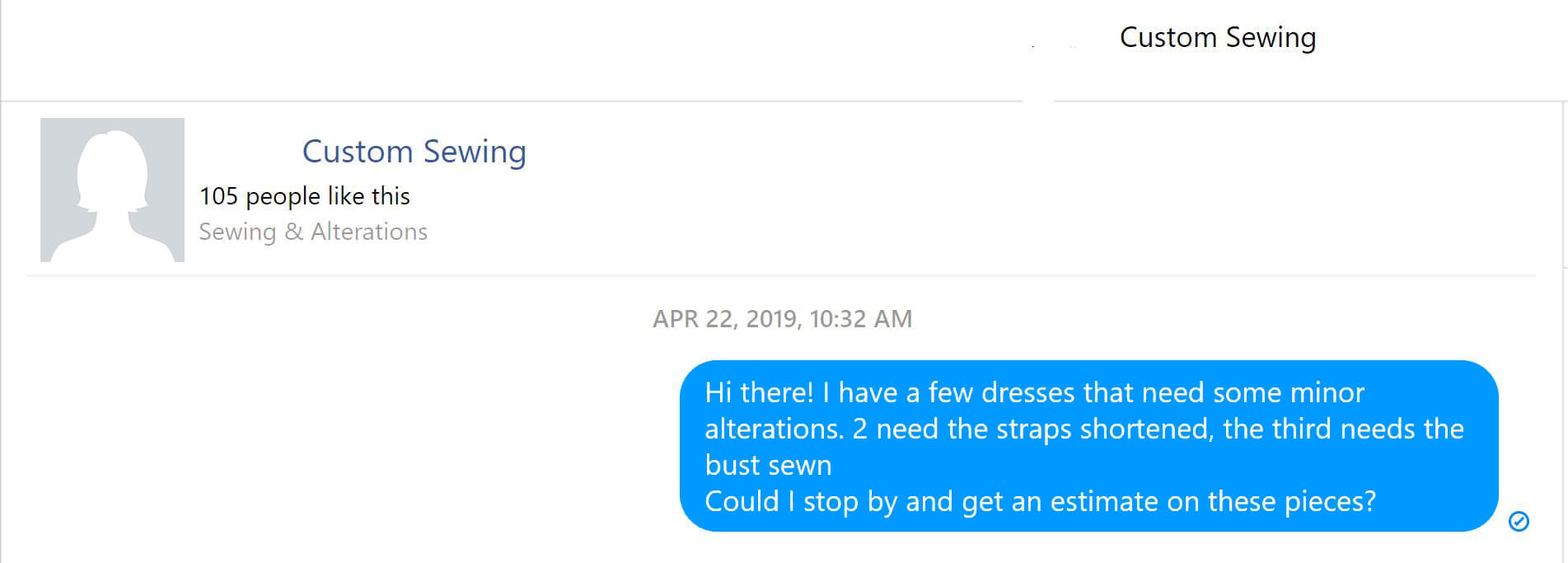On a scale of one to 10, how would you rate your business’s customer service on social media?
If you’re like most business owners, you probably think you’re delivering exceptional customer service online. 80% of business owners feel this way, while only 8% of their customers agree. Additionally, 54% of customers considered that digital customer-care teams were meeting their expectations, yet only 7% thought that their expectations were being exceeded on digital channels.
Customers expect to be able to reach a business for answers to their questions or replies to their complaints. Whether it’s on your platform’s customer service page, through private messenger, or via live chat on your website, customers anticipate a prompt and sincere reply.
As a consumer, I turn to social media for customer service for a few reasons:
- It saves me time sitting on the phone. As a busy person, I don’t want to waste time being on hold for ten minutes over a simple question.
- It provides me a written record of the transaction in case I need to go back to it, and I find it easier to communicate my needs in writing than over a potentially poor phone connection.
- It’s convenient to communicate through the platforms that I already use on a daily basis and allows me to interact with customer service on a timeframe that’s convenient for me.
EXAMPLES OF GOOD AND BAD SOCIAL MEDIA CUSTOMER SERVICE
I’ve had some great customer service encounters on social media, as well as some that were not so great. I’ll share a few examples of my experiences below.
EXAMPLE 1: TWITTER
21% of consumers prefer Twitter to traditional customer service channels. It’s a great place to quickly grab a big brand’s attention. And the character limit keeps people from writing a novel and burying their issue.
Good:
I had ordered a black sweater from a popular clothing retailer, H&M, and after one wash, the item started to fray on the arm. I contacted the retailer via a Tweet.

Customer service was quick to apologize for my experience, and immediately detailed what to do next. They also answered my question about return shipping. (I detest paying for shipping.)
Hi again! Since the item was delivered in bad conditions, we will not be deducting any return fee from your refund.
— H&M Customer Service (@hm_custserv) November 22, 2017
I returned the item but realized they had still charged me for return shipping.
Hello Kimberly! Sounds like the correct reason code may have been missed. Please DM us your full name, e-mail, and address as they appear on your account. https://t.co/2QNKSGBfjp Hope to hear from you soon!
— H&M Customer Service (@hm_custserv) December 11, 2017
They were quick to instruct me to simply direct message them, which I did, and they ultimately refunded me the return shipping. Despite having a defective product, I left with a positive attitude toward the brand not only because of H&M’s quick response and easy-to-follow directions, but also because the customer service team appeared to have a genuine interest in solving my problem.
Bad:
I contacted Google My Business to inquire about a logo-usage issue. It took over three days to reply to my Tweet. By then, I had already jumped on the phone to speak to someone because I needed an answer sooner rather than later. While I ultimately did get a reply, the response time took far too long, and I was left feeling disappointed.
Hey there! We’ve just responded to you via DM, we can continue working on your issue from there! -Tori
— Google My Business (@GoogleMyBiz) April 26, 2019
Example 2: Facebook Messenger
More and more Facebook followers use Facebook Messenger to quickly ask questions. The majority of the time, it’s what I use when I want to know what the soup of the day is or if a business is closing early on a holiday. Facebook Messenger can be a powerful customer-service tool.
Good:
I received a package that looked like it had been through the shredder. There were two huge holes and the small items in the package could have easily fallen out.

SweetLegs had an auto responder in place that told me what the business hours were and when to expect to hear a response. Soon after, they responded with an apology and remedied the situation by offering a shipping credit.

Again, because the company heard my issue, acknowledged that there was a problem and offered me something for the inconvenience, I will likely be a return customer.
Bad:
I have a few pieces of clothing that I need a tailor for. I found a local seamstress company and sent a private message to see if it might be able to provide me with an estimate. (I’ve removed the name and profile picture to protect its identity.) Unfortunately, I’m still waiting for a reply. And, because getting these items fixed isn’t exactly top of mind for me, I still haven’t picked up the phone to give them a call. In fact, the items have been sitting in a bag in my car for months now! ????

Example 3: Chat Client on Website
Providing a chat client like Zendesk or Intercom is a great way to handle incoming customer questions. You can even create a chatbot to answer the most common questions like “What time are you open?” or “Where are you located?” If you decide to invest in a chat client, you must staff it and you must provide customers with realistic timeframes of when to expect a response.
Good:
At Dream Local, many of the tools we use in the strategy department require frequent troubleshooting as the platforms we work with change daily. One of these tools has a stellar chat function. I can have my questions answered, sometimes in minutes, and if the chat representative is unable to help me, the issue is escalated in a timely fashion with an expected time frame of resolution and follow-up via email. It makes interacting with them a joy, rather than an additional frustration when I’m already having an issue.
Bad:
I contacted an online outdoor retailer through their online chat feature about the shipping label on a package I had ordered as a gift for Christmas. I waited, and waited, and never got a reply. Can you guess when I got a response? You’re right if you guessed that it was after Christmas had come and gone and it was almost the new year. At that point, because I was so irritated about their lack of a prompt reply, I was unable to appreciate their late attempt at being helpful.
Lessons to be Learned
Take Time to Read Your Messages and Respond
The worst thing a customer can experience is trying to communicate with your business and getting no response. That’s the quickest way to lose a customer. To avoid this, designate a member of your team to handle customer inquiries and make sure that alerts and notifications are set up for each channel you’re on. Be sure there is time built into the team member’s workday to address incoming messages.
Discuss how you want to handle different customer inquiries including any negative messages you might receive. Search Engine Journal recommends considering these questions:
- What is your desired response time?
- What tone of voice should you take?
- What constitutes a social media crisis and when should managers be alerted?
- Will you respond to positive feedback and if so, how (liking, commenting, reposting)?
Response Time is Important
Customers are going to expect a prompt response because they’re using social media. One-third of customers expect brands to respond to them in less than 30 minutes and 80% of customers felt that an instant reply to their queries had a moderate to major influence on their loyalty to the brand.
It’s not realistic to be available 24/7, but through automated messages you have the capability to be open and honest about your hours and when customers can expect to hear from you.
As you can see, the big discrepancies discussed earlier are due to brands either not investing the time to implement a customer service strategy on social media or not following through to make sure that the plan they do develop is actually being adhered to.
No matter how big or small your business is, not having a plan in place can cause you to lose customers before they’ve even walked through your doors. Customers expect to be able to reach a real person, and no matter what avenue they use to reach out to you, a timely response is critical to the health and growth of your business.
If you need help handling customer service on your social media channels, the team at Dream Local Digital and I are here to help!




